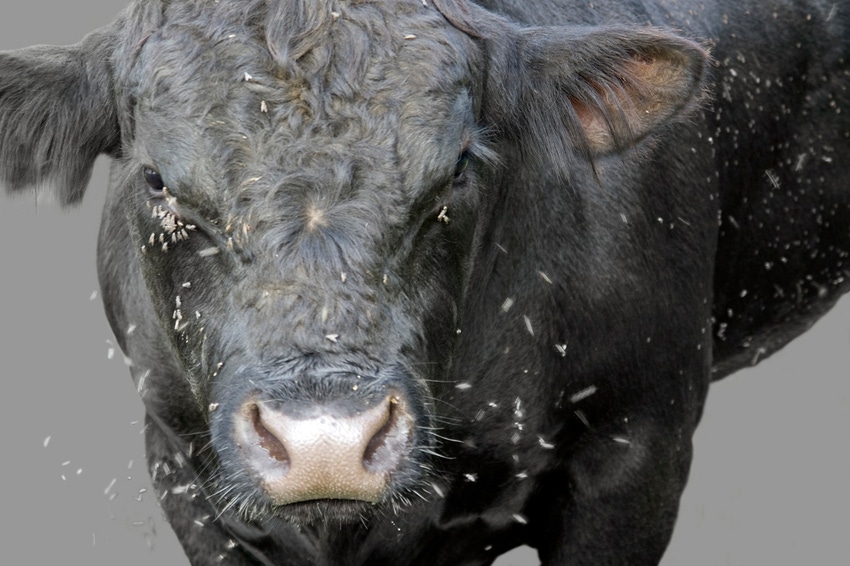
Many years before I ever saw a roller bug, several old clients of mine told me of the bug’s behavior and some of the games they had played with the big dung beetles back in their school days. I would ask to see beetles and hear, “Hell Doc, they’ve disappeared.”
The fact is that my colleagues and me and the Green Revolution worked hard to kill them and a bunch of other stuff. We would have been better off if we had done a bunch less. Conventional fly control programs are mostly a disaster and lose money. Presently I am tickled and proud that a bunch of the dung beetles escaped our “death camps.”
My point about dung beetles is they can help control face flies and other pest species dependent on cow dung in their life cycles.
I understand that eye appeal matters when it comes to face fly control. I will be the first to agree that 50 or 100 face flies on several animals in a herd of cows, calves and/or yearlings appears to be a problem and we need to escape that scenario. As with all pest species, we need to look at behaviors and life-cycle events for them to help us manage.
Face flies spend the night off the cattle. This is a plus. They require fresh manure to lay eggs. The manure cannot be disturbed or they won’t reproduce. Their eggs hatch quickly and larvae move in two to four days to soil and become adults in less than three weeks.
Feedyards don’t have face flies because of disturbance of manure and ground due to cattle densities. Face flies don’t bite. They mostly slurp secretions. Yes, they might scratch a few eyes but healthy eyes and their endothelium should heal in a few hours.
Face flies can transfer the pink eye organism(s) but the truth is you can have face flies without pink eye, or pink eye without face flies. Pinkeye requires poor endothelial health.
Most face fly programs are less than 70% effective. I have doctored pink eye in January and about every other month. Real healthy eyes don’t have pinkeye. Lots of operations have a pinkeye outbreak every three years. Why?
I have seen my share of blind cattle that were bumping the wire trying to get along. I have viewed more calves with their heads pointed to the sky in pain than I care to talk about. I’ve seen weaned calves and short yearlings with pink eye lose 50 pounds in less than two days. This is not a new game. Pinkeye can get into our back pockets.
However, face flies can be controlled with grazing management and pinkeye can be reduced to near insignificant numbers with attention to a few management tips. Here are seven helps:
Spot treat flies if critical, but without systemic pesticides.
Graze in high densities with 70,000 pounds stock per acre as a minimum.
Move cattle in the late afternoon.
Pay close attention to your soil. High-functioning water and mineral cycles yield a functional biological cycle. The energy cycle follows. Then we see fly control.
Supplement what you need on the land and to the cattle. Depending on where you live, calcium will usually be No. 1. The others will vary. Don’t overlook salt, magnesium, phosphorus, iodine, selenium, copper and vitamin A.
Two doses of pinkeye vaccine can help.
Never forget that plant diversity and maturity yield stability.
I feel blessed to have face fly and pinkeye problems mostly behind me, maybe.
The opinions of the author are not necessarily those of Beef Producer or Farm Progress.
About the Author(s)
You May Also Like






